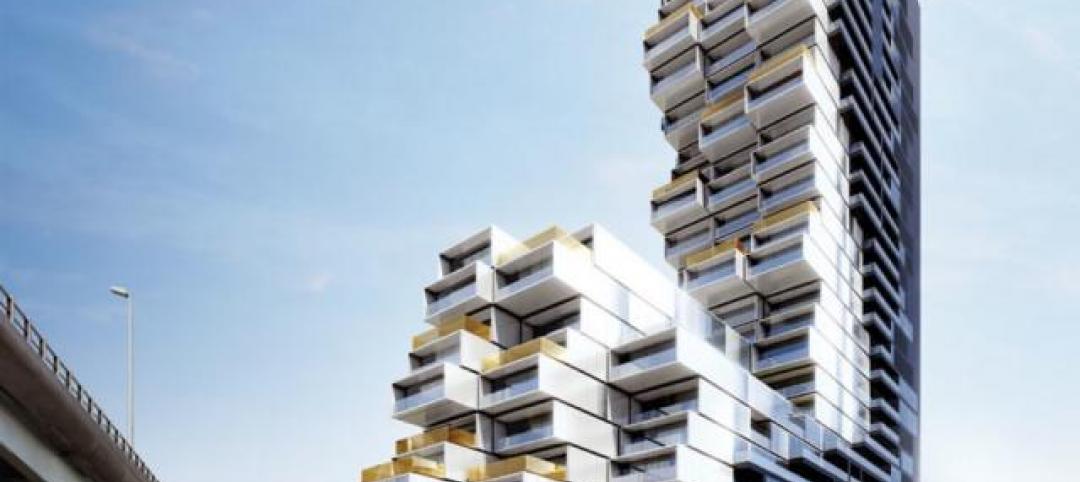Natural disasters that have devastated Puerto Rico over the past few years—at least 160,000 homes were destroyed by Hurricane Maria in September 2017, and another 30,000 were damaged by Hurricane Dorian last August, to say nothing of the damage caused by a 6.4-magnitude earthquake that shook the island last month—exposed the longstanding deficiencies in the commonwealth’s construction practices.
Close to half of Puerto Rico’s housing has been built—and continues to be built—“informally,” meaning that owners didn’t get permits, didn’t hire a licensed architect, and in all likelihood didn’t build to code.
With the island in need of between 60,000 and 90,000 new housing units by 2023, the question before Puerto Rico’s leaders and citizens is whether rebuilding and renovation will take safety and resilience more seriously.
“The problem is not the codes, which are equal or similar to what’s followed in the U.S.,” explains Ricardo Alvarez-Diaz, founder and chairman of Alvarez-Diaz & Villalón, the island’s largest architecture firm. He is also a member of the Construction Council of Puerto Rico. “The problem is the implementation of the codes and their enforcement.”
He says more rigorous enforcement will require a change in cultural mindset among the island’s residents for whom “informal” construction has been a way of life, and a girding of political will among politicians who too often turn a blind eye to illegal construction every election cycle.
The situation in Puerto Rico is complicated by many factors, not the least of which being that the laws mandate that licensed architects and contractors take full responsibility for code enforcement. But because Puerto Rican contractors don’t need licenses to operate, the onus of code enforcement falls squarely on the architects, whose liability insurance premiums are second only to doctors', says Alvarez-Diaz.
He notes, however, that there’s been a “big push” to require contractors to be licensed, which he believes could happen later this year.
Homeownership in Puerto Rico, at around 70%, is higher than in the U.S. But that ownership rate, says Alvarez-Diaz, is a double-edged sword because owners that have paid off their mortgages typically don’t carry insurance, or are less educated about the benefits of hiring professionals for rebuilding or remodeling.
What’s changing the island’s attitudes about following building codes, however, have been mandates by the Federal Emergency Management Administration (FEMA), and the U.S. Department of Housing and Urban Development (HUD) that federal funding for rebuilding is contingent on more rigorous code enforcement.
This is nothing new: FEMA and HUD imposed similar requirements after Hurricane Andrew wiped out parts of Florida in 1992 and exposed shoddy construction and, in some markets, nonexistent code enforcement.
Puerto Rico desperately needs the U.S. government’s money. A few years back the island’s Governor’s office estimated that rebuilding what Hurricane Maria destroyed would cost at least $31 billion, well beyond the means of a financially precarious commonwealth whose poverty rate hovers around 44%.
Currently, the government evaluates properties to determine whether they are worth rebuilding or if their residents need to relocate. And one of the criteria for those determinations is whether the building is in an existing flood plain. “FEMA has made it clear, as has the government, about not wanting to rebuild in flood plains,” says Alvarez-Diaz. HUD’s CDBG-DR funding allow for building above flood plain levels, but the ultimate decision lies with Puerto Rico’s Housing Authority.
Alvarez-Diaz cites estimates that more than 73,000 housing units, out of the 250,000 affected by recent storms, might need to be moved to higher ground, and that only about 35,000 units are in good enough condition to be rebuilt or elevated.
So what’s the alternative? One solution could be urban densification. Alvarez-Diaz says that only recently have Puerto Ricans become more receptive to renting as opposed to owning. That change of heart might also be motivated by the government issuing Section 8 vouchers that can be used for rental housing.
Bayshore Villas is a mixed-use complex that offers 170 rental apartments that range in size from 600 to 1400 sf.
For the past several years, Alvarez-Diaz’s firm has been trying to bring more affordable rental housing to the island. Its first big project was Renaissance Square, a 170-unit building that is Puerto Rico’s first mixed-income public housing development, and the island’s first Energy Star-rated project. Renaissance Square was approved in 2014, started in 2017, delayed by the storms, and completed last year.
Alvarez-Diaz & Villalón has two similar projects on the island. Bayshore Villas, located on the former Puerta de Tierra public housing project near Old San Juan, offers 174 rental units ranging from 600 to 1,400 sf, more than 5,800 sf of commercial space, and 6,000 sf for community and administrative uses. Last May, construction began on the Jose Gautier Benitez development in Caguas, P.R. This 21-acre development is divided into six residential blocks, and will include 438 one- and two-bedroom apartments as well as a five-story elderly housing facility. This building should be completed next year.
Alvarez-Diaz says the success of Renaissance Square has gotten his firm work in Texas, Florida, and the Virgin Islands.
Related Stories
| May 5, 2014
Toronto residential tower to feature drawer-like facade scheme
Some of the apartments in the new River City development will protrude from the building at different lengths, creating a drawer-like "push-pull" effect.
| May 2, 2014
Norwegian modular project set to be world's tallest timber-frame apartment building [slideshow]
A 14-story luxury apartment block in central Bergen, Norway, will be the world's tallest timber-framed multifamily project, at 49 meters (160 feet).
| May 1, 2014
Tight on space for multifamily? Check out this modular kitchen tower
The Clei Ecooking kitchen, recently rolled out at Milan's Salone de Mobile furniture fair, squeezes multiple appliances into a tiny footprint.
| Apr 30, 2014
Visiting Beijing's massive Chaoyang Park Plaza will be like 'moving through a urban forest'
Construction work has begun on the 120,000-sm mixed-use development, which was envisioned by MAD architects as a modern, urban forest.
| Apr 29, 2014
Best of Canada: 12 projects nab nation's top architectural prize [slideshow]
The conversion of a Mies van der Rohe-designed gas station and North Vancouver City Hall are among the recently completed projects to win the 2014 Governor General's Medal in Architecture.
| Apr 29, 2014
USGBC launches real-time green building data dashboard
The online data visualization resource highlights green building data for each state and Washington, D.C.
| Apr 23, 2014
Developers change gears at Atlantic Yards after high-rise modular proves difficult
At 32 stories, the B2 residential tower at Atlantic Yards has been widely lauded as a bellwether for modular construction. But only five floors have been completed in 18 months.
| Apr 17, 2014
Online mapping tool helps teams determine multifamily project tax credit eligibility
Accounting and advisory firm Baker Tilly has launched a new, interactive online mapping tool that helps users determine if a business or development project may qualify for the New Markets Tax Credit or Low-Income Housing Tax Credit program.
| Apr 11, 2014
ULI report documents business case for building healthy projects
Sustainable and wellness-related design strategies embody a strong return on investment, according to a report by the Urban Land Institute.
| Apr 9, 2014
Steel decks: 11 tips for their proper use | BD+C
Building Teams have been using steel decks with proven success for 75 years. Building Design+Construction consulted with technical experts from the Steel Deck Institute and the deck manufacturing industry for their advice on how best to use steel decking.
















